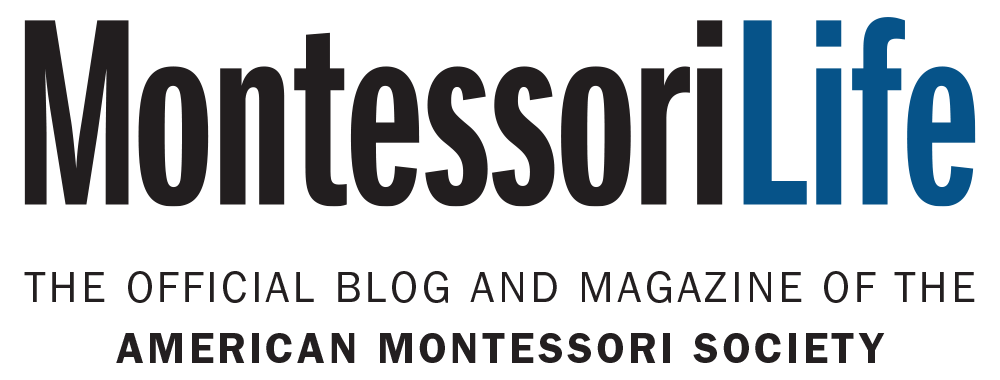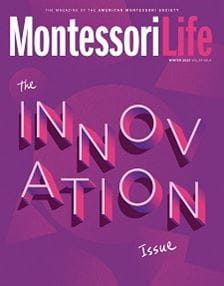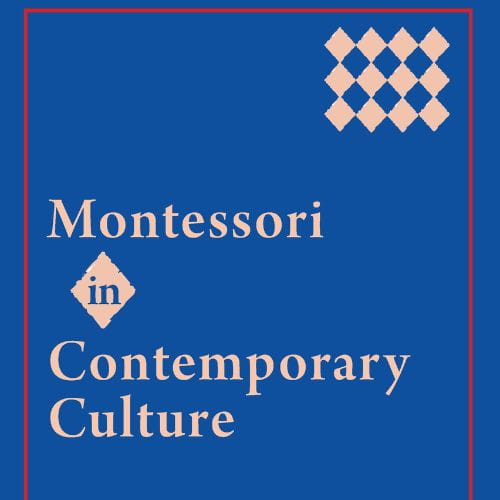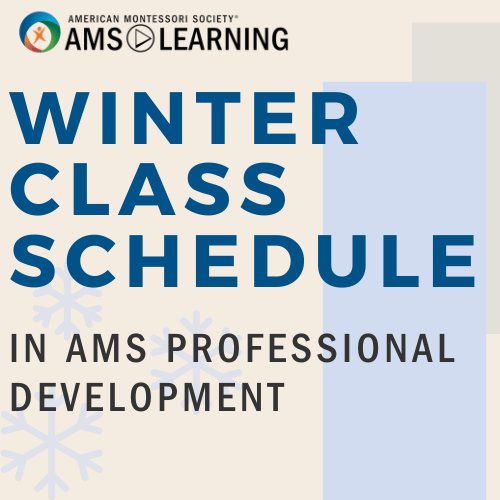"Basic Truths" Thinking and Creative Persistence: An Interview with Chris Barton (From the Winter 2023 issue of Montessori Life Magazine)
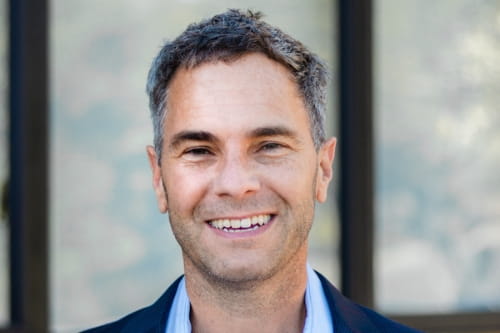
This article was featured in our 2023 Winter edition of Montessori Life magazine. Read full issues online (AMS members only).
AMS members also receive a print subscription to Montessori Life magazine. Become a member today to receive your own subscription plus access to the complete digital archives.
Chris Barton, a keynote speaker at The Montessori Event 2023, is the creator and first CEO of the song-identifying app Shazam. Chris is also a three-time start-up founder; a pioneer of mobile partnerships at Google and Dropbox; an adviser to start-up companies; an inventor of 12 patents, including one found within the Google search algorithm; and a former strategy consultant serving many industries. In the following interview with AMS Board director Anita Hanks, Chris discusses mindsets that lead to innovation.
ANITA HANKS: Chris, you have an impressive background as the founder of Shazam, and you’ve worked both at Google and Dropbox. I would love to know how you came up with the idea for Shazam and how you took it from an idea to the successful company it is today.
CHRIS BARTON: It all started in an unexpected moment while I was doing my MBA at UC Berkeley. I didn’t enter business school with a goal to start a company. But in my first couple weeks there, I was in the computer lab and struck up a conversation with the person sitting next to me. He said that he was starting a company while he was finishing his second year of the program. I was curious and asked him, “What did you do before business school?” His answer: he was an Air Force pilot. For some reason, I was expecting that someone starting a company would have incredibly relevant experience—that he’d say, “Oh, I’ve started three other companies before,” or “I helped someone start a company.” But instead he said, “I flew planes for the Air Force.” In that moment, I thought, “Wow. If he can go from being a pilot to starting his own company, why can’t I start a company?” I realized at that moment that entrepreneurship was about being a go-getter with a desire and a vision.
My next thought was, What is my company going to be? This was 1998. Two years before, about 30% of people had mobile phones, and by 2000, it was closer to 80 or 90%. I remember thinking, Everyone is getting mobile phones. There’s got to be something else they can do with those phones! Remember, at that time, mobile phones were just used for phone calls and basic text messages. The App Store, iTunes, and the iPod did not exist. You couldn’t even take photos or stream music with your phone.
No one else was really thinking about building applications for phones. I saw the opportunity and began brainstorming what I could do. My initial idea was just to enable people to see what was playing on the radio, but ultimately that idea turned into something far better—identifying songs using just the sound in the air. Shazam!
AH: Shazam just celebrated turning 20—and officially passed 70 billion song recognitions, correct?

AH: I imagine that when you started Shazam, the scope of the project was narrow. As the reach of technology grew, did you make any interesting discoveries about the functionality of the platform?
CB: When we started, my team and I were building something for consumers: the ability to use their mobile phones to identify songs. Over time, we identified separate business needs. One involved royalty collection societies, which tracked song play on the radio and then distributed royalties to artists. The collection societies were having to estimate the number of times a song was played on the radio, which was not very accurate. We licensed our technology to them to measure this in a highly automated and scalable way across thousands of radio stations. This brought in some much-needed early revenue to keep Shazam afloat, and we ended up spinning off that business and selling it to one of the royalty societies.
Another partnership developed with Samsung. People were beginning to put music on their phones (this was still before smartphones), and the songs would not show up with their titles but rather as “MP3 Track 2” or something like that. We licensed our technology to Samsung so their phone users would be able to view the correct song names of tracks on their phones.
AH: For both examples, did you realize that these were problems that should be solved, or did the other organizations come to you for assistance?
CB: The partnerships came from a combination of brainstorming and exploration. I think that is often true for innovation in general. We like to think of innovation as being this “aha” moment of generating an idea, but it is more often an iterative and exploratory approach, and an organic process. In the case of the royalty societies or Samsung, hearing what their problems were and then taking an iterative approach led to new solutions.
Many inventions result from combining two different ideas to arrive at a great new idea. Another form of combination comes when multiple people contribute to solve a problem. It might be just one person brainstorming and then collaborating or interacting with another person that sparks ideas.
AH: You believe that the most impactful innovations come not just from new applications of technologies but also from different ways of thinking.
CB: Yes. I have five methods—five different ways of thinking—that I call “Start from Zero.” One of the five methods is “thinking from basic truths,” also known as “first principles thinking.” This approach has been used by many great innovators, including Leonardo da Vinci, Steve Jobs, Henry Ford, and Elon Musk. In thinking from basic truths, instead of starting from what you know, you have to question all your assumptions so that you can break things down to the “basic truths.” For Shazam, my initial idea was based on traditional thinking. I was going to monitor radio stations and then provide a service that would tell you what song was playing. But that would have been limited. You wouldn’t have been able to use it to identify any song played in public not on the radio: in a bar, café, nightclub, or movie theater. It would also be a clunky user experience because you would have to type in a radio station every time.
Then I applied thinking from basic truths. What if you didn’t need to rely on this technology of what is playing on the radio? What if you could just identify it through the air—literally, the sound waves in the air coming to the microphone of the phone? That was the breakthrough idea, and it was created by starting from two basic truths: one, all phones have microphones, and two, music is audible sound. It was about questioning the assumption that you need to know what’s playing on the radio to identify a song and then coming up with a completely new foundational, disruptive idea.
But thinking from basic truths is hard work. We’re not wired to think this way. Our brains like to use shortcuts; we tend to think based on what is familiar (thinking by analogy) in order to get things done and solve problems. As I said before, we usually start with what we know rather than starting from zero (as we do in thinking from basic truths).
AH: How do we as educators apply the principles of thinking from basic truths and creative persistence to our work?
CB: These principles are not specific to technology or other start-up companies trying to build successful businesses. They can be applied by anyone who wants to innovate and drive themselves to be successful. In thinking from basic truths, you start by identifying the assumptions you are making so you can drill down to the basic truths. However, even once you have your initial new idea and start to implement it, you will hit various barriers, whether it’s pushback from other people or a problem you can’t solve. Oftentimes, that is where people give up, and the idea dies. This is where creative persistence is important. And I call it “creative” persistence because you’re not only having to knock down barrier after barrier, but you’re having to be creative in your solutions.
Some of the greatest success stories of innovation come from those who have an idea and then have conviction about it—a conviction that is almost like an obsession. And the reason I describe it as an obsession is that there will be so much resistance to any innovative idea you may have. There will be the “can’t do” people who say, “That’s not a good idea,” or “It can’t be done.” But you need to stay true to the key things that are your obsessions or your convictions. You just can’t give up.
AH: Identifying problems and having convictions when it comes to innovation—I think these concepts resonate deeply within the Montessori community. Montessorians are deeply convicted individuals; we’ve chosen this approach and pedagogy because we believe strongly that this is the right way for a child to learn.
My next question is about students. Educators talk a lot about supporting executive functioning skills—in that it’s not necessarily about what you learn but the ability to learn that matters. Critical thinking, being an innovator, taking risks, questioning the status quo—these are important skills for our students to have because we don’t know what the future holds for them; the jobs they will do in the future may not have even been created yet. What advice would you give educators to help them cultivate this kind of innovative or even entrepreneurial mindset in their students?
CB: The world that we live in is one where children are often led to believe that they are measured on standard systems like standardized tests and grades. The rewards in the classroom setting should be oriented around the uniqueness of the input from the child rather than any kind of standardized measure of it.
My son went to a Montessori preschool. In Montessori, it is foundational to build up students’ confidence and encourage independent thinking. Our brains are about as different as our height and eye color. We all have different brains, and we all have different ways of thinking. It is all about what are you good at and how you can leverage what you’re good at.
As far as helping students develop an entrepreneurial mindset—first, students should be encouraged to pursue their interests. Second, a core ingredient of an entrepreneurial mindset is grit, which when combined with creativity enables the creative persistence I talked about earlier. We need to encourage students that if they’re questioning the status quo, it’s a form of negative defiance, a drain on the system. But if this sort of questioning is encouraged, and the success that comes from it is celebrated, more people will do it.
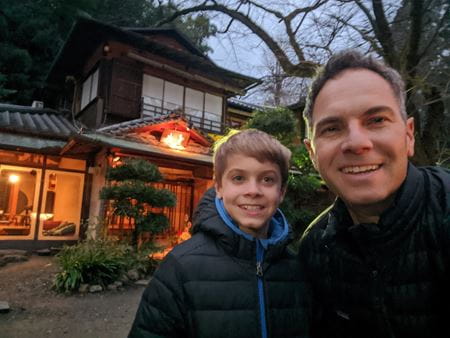
CB: Yes! I love children. They definitely think that way naturally, and building on that is a great thing. I remember a conversation I had with my son when he was eight years old. He asked, “Daddy, what are taxes?” And I said, “When you earn money, you pay a portion of it to the government.” And then he said, “They should just earn their own money.” I thought that was the funniest thing. It wasn’t a political statement at all; it was just thinking from basic truths with an unbiased perspective.
One of the great advantages inherent to Montessori is its open-minded approach to education—and then you have all these perfect “basic truths” thinkers as students.
Mark your calendar! Chris Barton will speak live at The Montessori Event in Boston, Sunday, March 19, at 9:00 AM (ET). For more information, go to themontessorievent.org.
About the Author
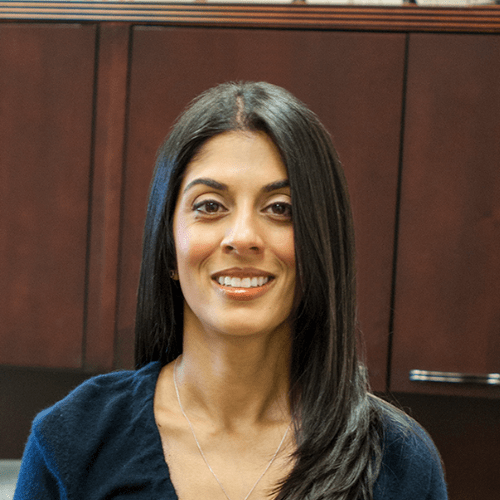 |
Anita Hanks, MEd, Anita Hanks, MEd, is the founder and head of school at Starwood Academy of Frisco in Frisco, TX and a member of the AMS Board of Directors. She is AMS-credentialed (Early Childhood, Administrator). Contact her at anitahanks@starwoodacademy.com. |
Interested in writing a guest post for our blog? Let us know!
The opinions expressed in Montessori Life are those of the authors and do not necessarily represent the position of AMS.

